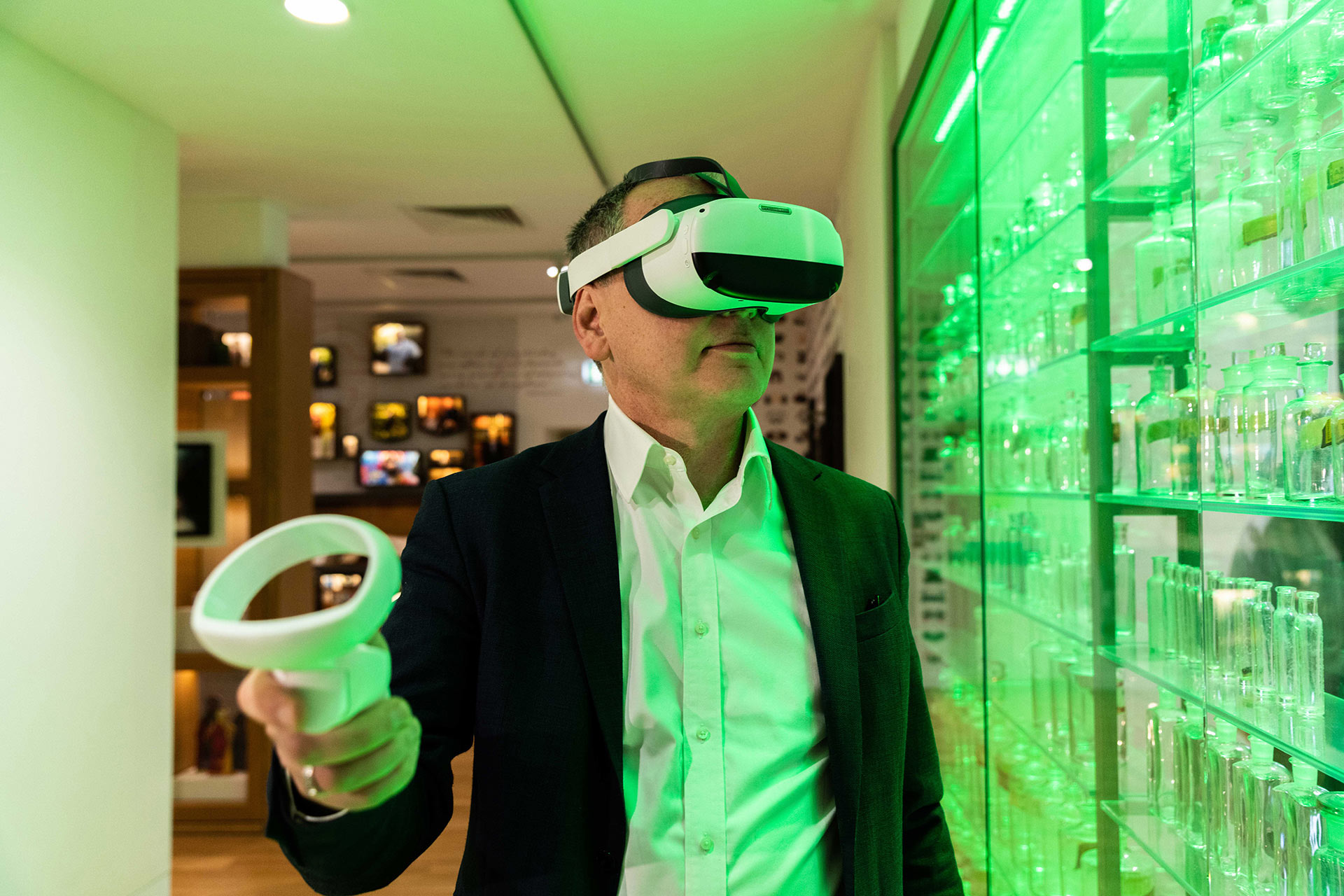WAINS is taking new approaches to support pest controllers and make their work more efficient and sustainable. The startup's solution combines Cumulocity IoT with image recognition based on artificial intelligence. In this way, the company aims to contribute to the more targeted use of biocides in the future.
For Benjamin Ruoff, the smell of freshly baked bread evokes vivid childhood memories of his parents’ bakery: the delicious smells, the warm baked goods, the care taken with the ingredients. “It was a formative experience,” the 40-year-old recalls. While he may not have become a baker, he does enjoy cooking in his spare time. “My parents’ passion for preparing something fresh and healthy by hand is part of me,” comments Ruoff.
Food is also an important subject in his work. As managing director of the technology start-up WAINS, based in Albstadt on the Swabian Alb, he and his team are working hard to find solutions to the global challenge of keeping the eight billion people on earth supplied with grain, fruit, vegetables, and meat in as secure and sustainable a manner as possible.”
The problem that WAINS GmbH has been trying to solve since its inception at the end of 2019 is that wherever you trade, store, or prepare food, you also find pests, such as mice, moths, maize, and rice weevils. “Digitalization can help detect an infestation at an early stage,” explains Benjamin Ruoff, who studied media informatics and had 14 years of experience in the field of app development before founding WAINS. WAINS has combined the IoT platform Cumulocity IoT with AI-based image recognition. “We are creating a digital early warning system for pest controllers and their customers in industry, pharmaceuticals, and the hotel and restaurant sector, which identifies pests before they can proliferate and become a problem.”
Fewer biocides, greater efficiency
WAINS has developed special pest traps and, with the help of Cumulocity IoT from Software AG, created a digital ecosystem to combine the best of the analog and digital worlds. The traps are boxes containing attractant tablets or pheromones to attract harmful insects or rodents. Sensors and cameras continuously measure the ambient temperature and humidity and supply photos. A digital transmitter unit sends all the information to the cloud on a daily basis. Cumulocity IoT then evaluates the information and clearly displays it on a dashboard. “Our system uses a comprehensive database of insect taxonomies, which we developed ourselves, to automatically detect and classify the captured pests and alert the user immediately,” says Benjamin Ruoff.
The advantage over the analog solutions currently used by 99 percent of companies is clear. Take, for example, a large bakery which has set up 150 traps. Once a month, these traps are physically checked by a pest controller and the results are documented by hand. Only then can countermeasures be discussed and initiated. “This approach is both time consuming and inefficient,” says Ruoff. “Pests spread quickly in such a scenario, precisely because they remain undetected for too long.”
Once you have an infestation, the only option is to use biocides. “For many companies and for politicians, this is a big issue, as is the long-term use of rodent poisons with approved toxic substances,” Ruoff adds. In this regard, he also refers to the European Union’s Green Deal, which aims to halve the use of chemical pesticides in the EU by 2030. “The fewer chemicals used, the better—both for humans and animals. All the stakeholders can agree on that.”
The vision: predictive pest control
In Europe alone, there are several million analog traps for crawling insects, which, according to WAINS, are currently awaiting digitalization. Digital monitoring and real-time analysis can provide valuable additional data. “If we simultaneously document and evaluate the infestation itself as well as environmental factors, such as temperature and humidity, we can better investigate the causes and eliminate these in a targeted manner,” says Benjamin Ruoff. The company also plans to call on the help of biologists to keep the insect database up to date with extremely rare or new invasive species, for example, which will, over time, result in an ever-growing data basis.
There are more interesting possibilities for the future. As the WAINS managing director explains: “With enough digitalized traps in the EU and sufficient data, we should be able to create pest infestation maps for the entire continent.” It would even be possible to map the development of an infestation over the course of a year, showing when and where which pests occur and how they spread. Ruoff is confident that, if this knowledge were combined with data from traps in mobile units—such as shipping containers or vehicles, for example—it would be possible to achieve predictive pest control: “I estimate that we would then have to use far fewer biocides. Pest-free management in food supply would be a significant step towards safety and sustainability.”


